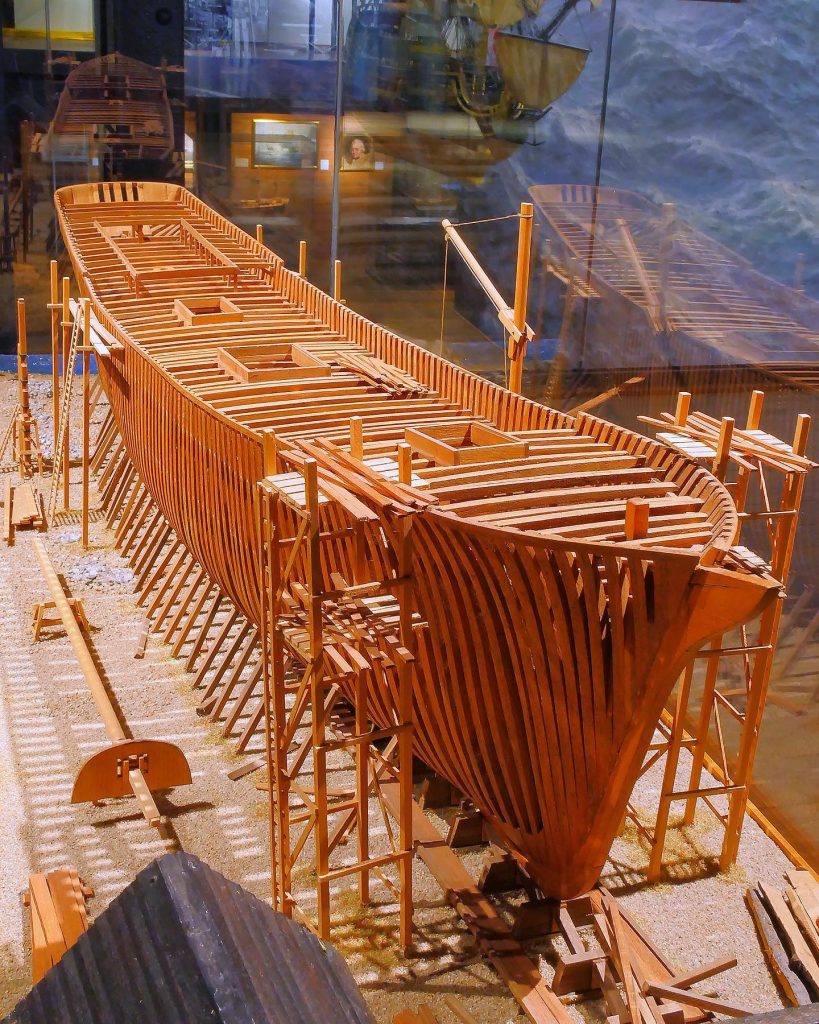
Shipyard Goss, Sawyer & Packard. This 1:48 scale diorama shows the construction of such a three-masted tall ship at the Goss, Sawyer & Packard shipyard. It is on display on deck 3 of the museum.
One of the most important aspects of the industrial revolution that transformed the maritime world from the mid-19th century onward was the use of steel to build ships. After wood had been the most important material for shipbuilding for thousands of years, steel opened up a host of new possibilities in terms of the size, structure and strength of ships. However, this development by no means ended the construction of wooden ships. The tradition is still maintained today and was still widely used until the mid-20th century.
The shipyard of Goss, Sawyer & Packard in Bath, Maine (USA), was an example of this tradition. It was successful in building larger wooden ships between 1866 and 1906, when it was bought out to become part of the larger Texas Steamship Company. The company had been founded by Guy C. Goss and Elijah F. Sawyer. Goss owned Goss Marine Ironworks, which specialized in building steam engines. These engines were used to power sawing machines that could process shipbuilding lumber more quickly and efficiently. Benjamin F. Packard joined the company in 1873, and the shipyard was eventually renamed the New England Shipbuilding Co. in 1884. The shipyard was not only the most important of its kind in the U.S., but also made a name for itself worldwide.
Goss, Sawyer & Packard specialized in building larger barques and schooners. These included larger fishing vessels and the so-called Cape Horners (also known as Down Easters). These were larger vessels built to carry cargo between the Atlantic and Pacific Oceans. Until the Panama Canal opened in 1914, shipping on this route had to round Cape Horn, the most dangerous sea area on earth. The sailing ships of Goss, Sawyer & Packard always proved that they were robust enough to meet this challenge. The tall ship named after Benjamin F. Packard was built in 1883. It was in service as Cape Horner until 1908 and continued its active career until 1927. Its captain’s cabin is preserved by our colleagues at the Mystic Seaport Museum.
